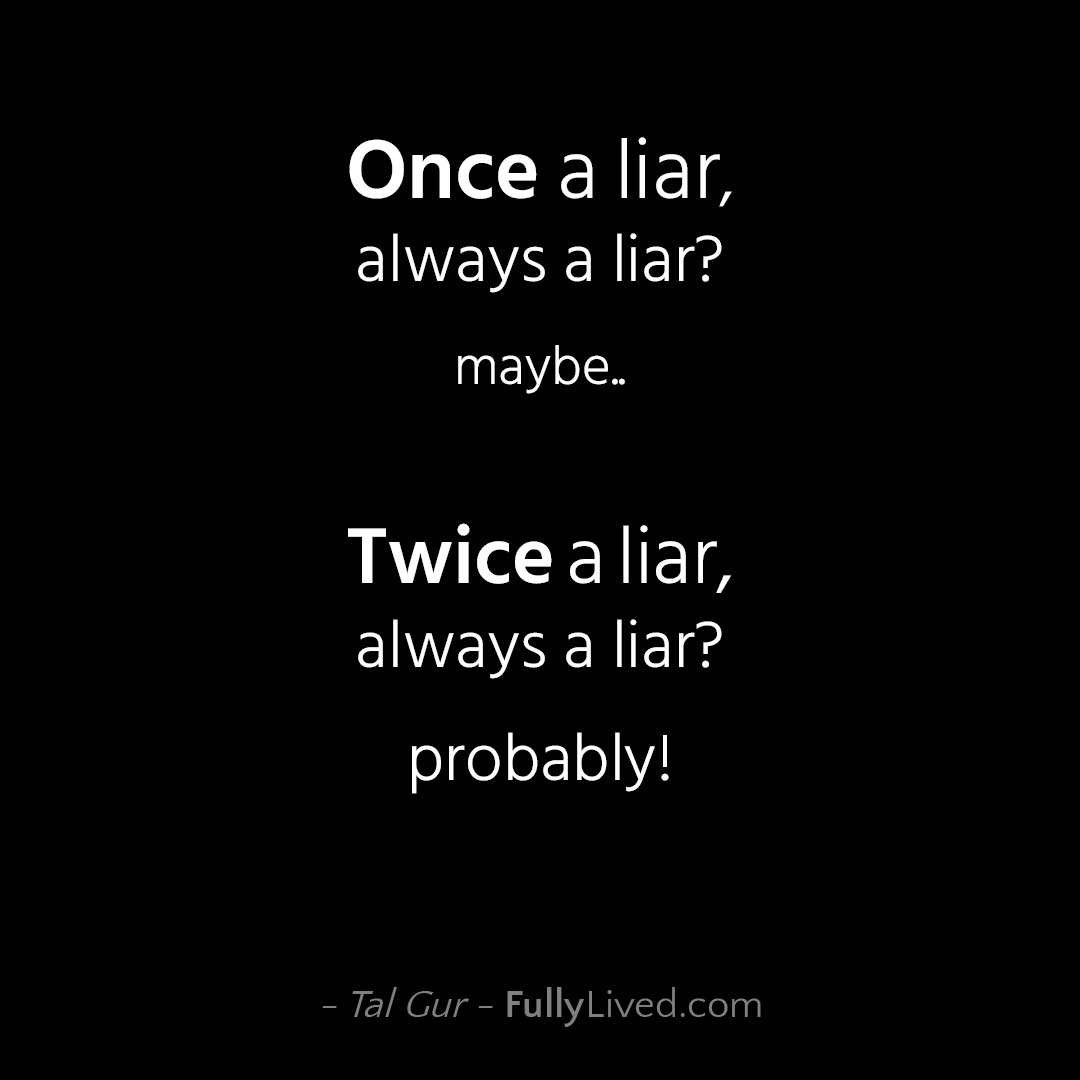Once a liar, always a liar? maybe.. Twice a liar, always a liar? probably!
What's the quote's message?
The quote, "Once a liar, always a liar? Maybe... Twice a liar, always a liar? Probably!" is an eloquent and thought-provoking statement that delves into the nature of human behavior, specifically around honesty and trust. It subtly interrogates our innate capacity for change, while also highlighting the value of personal growth and consistency. The first part, "Once a liar, always a liar? Maybe...," reflects a level of uncertainty, suggesting that we should not rush to judge or label others based on a single instance of dishonesty. This portion of the quote encourages a sense of forgiveness and an understanding that people have the potential to change. It acknowledges that everyone can make mistakes, and one lapse in integrity doesn't necessarily condemn a person to perpetual dishonesty. However, the second part of the quote, "Twice a liar, always a liar? Probably!", implies that repeated dishonesty can be a more accurate indicator of a person's character. It suggests that when a person lies repeatedly, it becomes harder to believe in their capacity for honesty. It serves as a warning and a reminder about the importance of consistency in our actions and the potential damage that repeated dishonesty can inflict on personal relationships and reputation. This quote carries a profound message about trust and integrity, reminding us to consider not just the frequency, but also the context of dishonesty when judging others, while acknowledging our own capacity for change and growth.
Is there a historical example that illustrates the message of the quote?
One historical example that illustrates the message behind the quote is the infamous story of Richard Nixon, the 37th President of the United States. Nixon's presidency was marred by the Watergate scandal, a political controversy that ultimately led to his resignation in 1974. Initially, Nixon was accused of illegal activities related to a break-in at the Democratic National Committee headquarters at the Watergate office complex. He repeatedly denied any involvement or knowledge of the incident, effectively lying to the American public. This was the "first lie."
Despite the growing evidence, Nixon continued to insist on his innocence, even stating in a famous press conference, "I am not a crook." Yet, investigations led by journalists and the subsequent findings of the Senate Watergate Committee uncovered a vast network of political spying and sabotage conducted on behalf of Nixon's reelection, along with a concerted effort to cover up the criminal activities. Nixon's "second lie" was thus revealed, and his repeated dishonesty resulted in a loss of public trust, his impeachment, and eventual resignation.
Nixon's story serves as an embodiment of the quote "Once a liar, always a liar? Maybe... Twice a liar, always a liar? Probably!" His first lie could have been seen as a lapse in judgment or an act of desperation. However, his continued dishonesty, even in the face of mounting evidence, solidified his reputation as a liar in the eyes of many. This historical example underscores the quote's message about the potential damage repeated dishonesty can inflict on relationships and reputations, in this case, on a national level.
* If you're looking for more inspiration to help you on your personal development journey, you may want to check out my extensive list of SMART goals. This page is packed with thousands of different goal ideas that can help you set new aspirations and reach higher heights in your life. Personally, this page helped me to create my own 100 life goals list, which I pursued for over a decade.
Chief Editor
 Tal Gur is an author, founder, and impact-driven entrepreneur at heart. After trading his daily grind for a life of his own daring design, he spent a decade pursuing 100 major life goals around the globe. His journey and most recent book, The Art of Fully Living, has led him to found Elevate Society.
Tal Gur is an author, founder, and impact-driven entrepreneur at heart. After trading his daily grind for a life of his own daring design, he spent a decade pursuing 100 major life goals around the globe. His journey and most recent book, The Art of Fully Living, has led him to found Elevate Society.



















